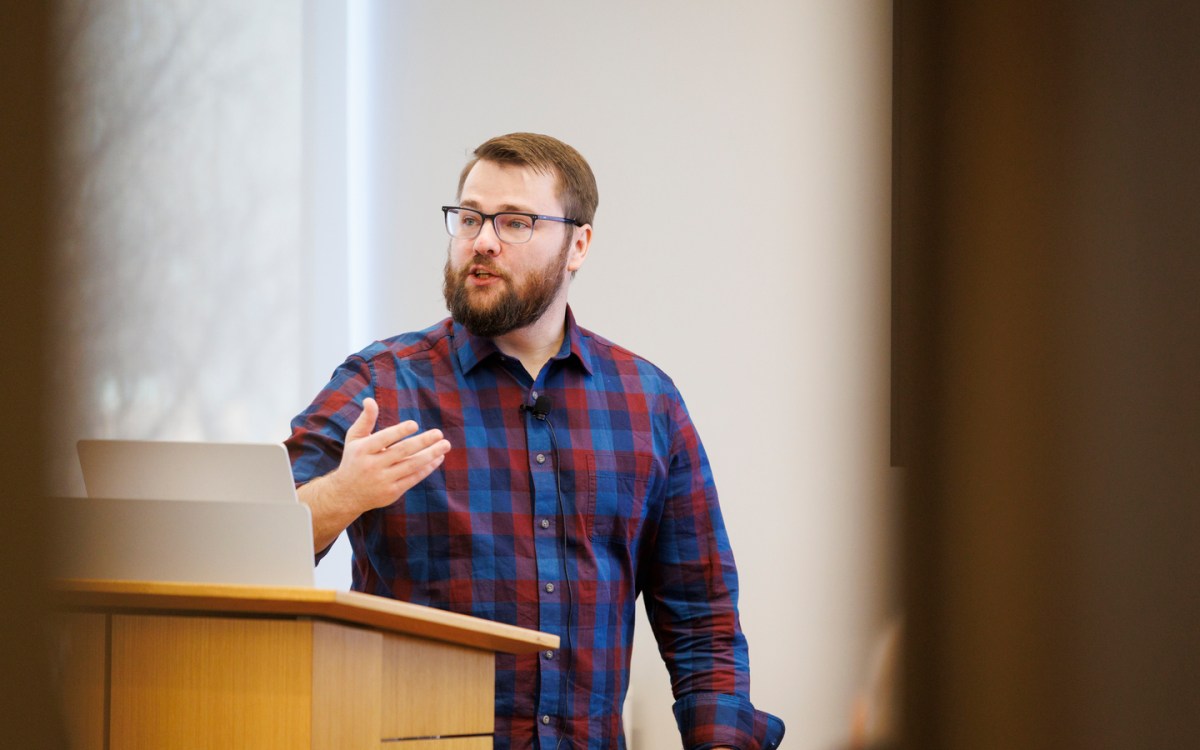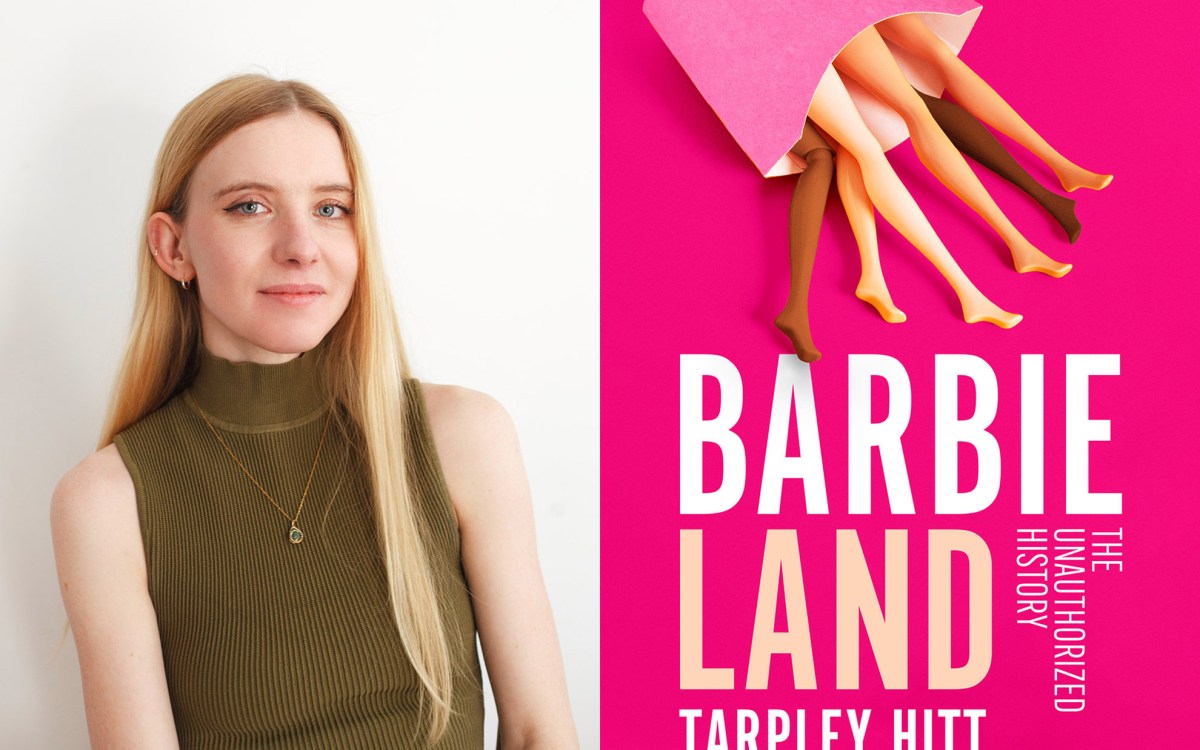What is it like to curate an art exhibit at the Pyramids of Giza?
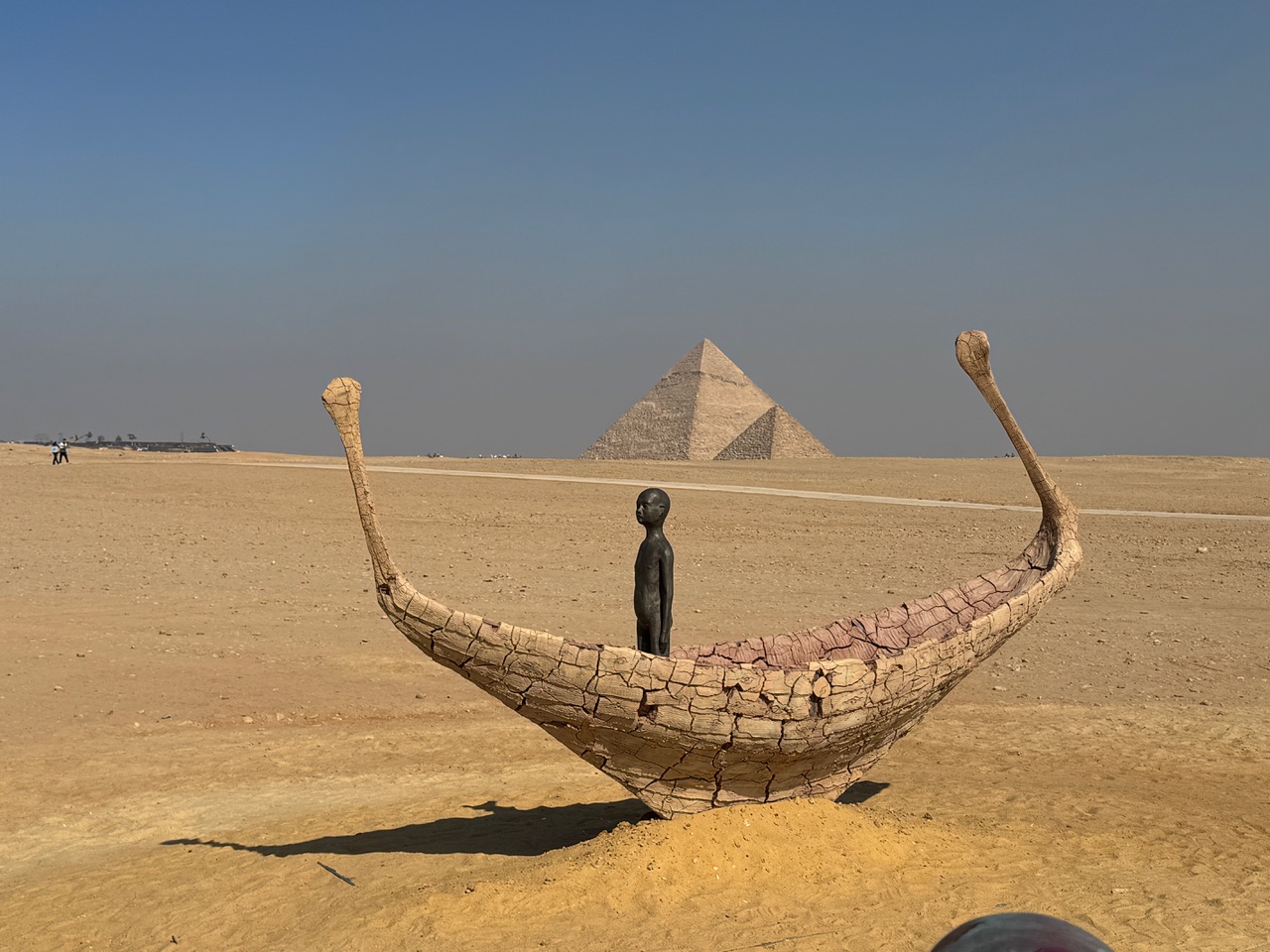
“Vessel of Time” sculpture by Jean-Marie Appriou at the Pyramids of Giza.
Photos courtesy of Peter Der Manuelian
In 2016, French Egyptian curator Nadine Abdel Ghaffar founded the organization Art D’Égypte in response to a problem she was seeing: a lack of public spaces in Egypt for people to view contemporary art.
“As a regular person in Egypt, you cannot go to these amazing museums or exhibitions,” Ghaffar told the audience at a lecture Nov. 13, hosted by the Harvard Museum of the Ancient Near East and the Harvard Museums of Science and Culture. “It really belongs to a certain elite that would go to a private gallery.”
But Egypt does have an abundance of public heritage sites, and Ghaffar saw an opportunity to link the old with the new. In the past eight years, her firm has curated free public exhibitions in sites like the Egyptian Museum, Manial Palace, Bibliotheca Alexandrina, and Mu’iz Street.
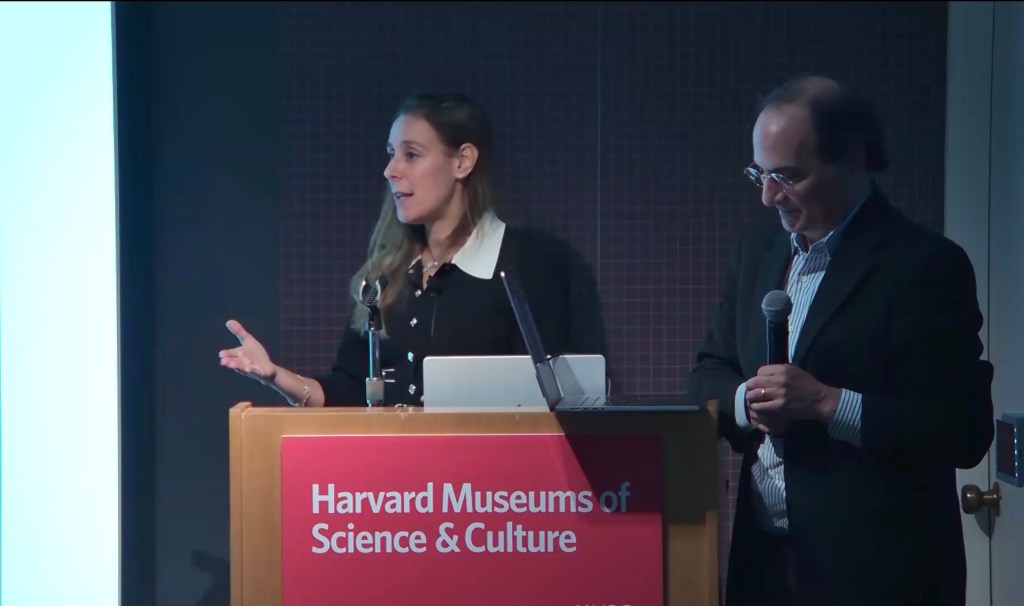
“The whole idea is breathing new life into those spaces through art,” Ghaffar said, “narrating a story but in a different way every time, showing new perspectives, creating cultural dialogues between the old and the new, between the artists and the space.”
In 2021, the organization launched the first ever contemporary art exhibition at the Pyramids of Giza, where they received half a million visitors in two weeks. Ghaffar took the HarvardX EdX online course “Pyramids of Giza: Ancient Egyptian Art and Archaeology” with Barbara Bell Professor of Egyptology and HMANE Director Peter Der Manuelian to prepare to work at Giza.
“[The Pyramids] is a monument that everyone on the face of the earth knows,” Ghaffar said. “I think it’s a symbol of hope to humanity, because when you think about it there were wars, pandemics, and it’s still there.”
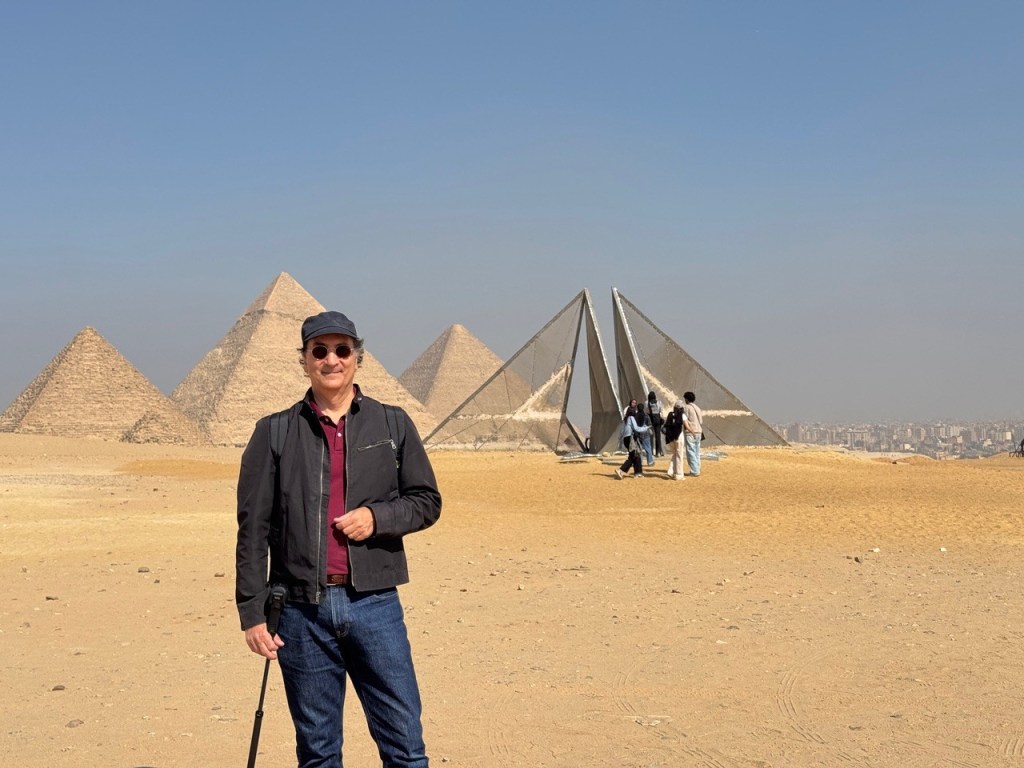
Making change wasn’t easy at first. Ghaffar needed the support of archaeologists and government agencies like the ministries of Foreign Affairs, Culture, and Tourism and Antiquities, and most were initially doubtful.
“It was very unorthodox. The archaeologists were like ‘what are these weird things that you’re going to throw at the Pyramids next to our beautiful monuments?’” Ghaffar recalled. “I was like, ‘it’s not a competition it’s an actual dialogue,’ a very meaningful curatorial pairing at the end of the day.”
There have now been four exhibitions and a fashion show at the pyramids, featuring artists that include Ik-Joong Kang, JR, and Carol Feuerman. Ghaffar said large-scale art projects like this can have a significant impact on a country, both economically and culturally.
“It’s a way of bridging the gap between countries, it’s a way of bringing in the world together in a nice way,” Ghaffar said. “It’s a way of shifting the mentality and showing people another side of these countries.”



